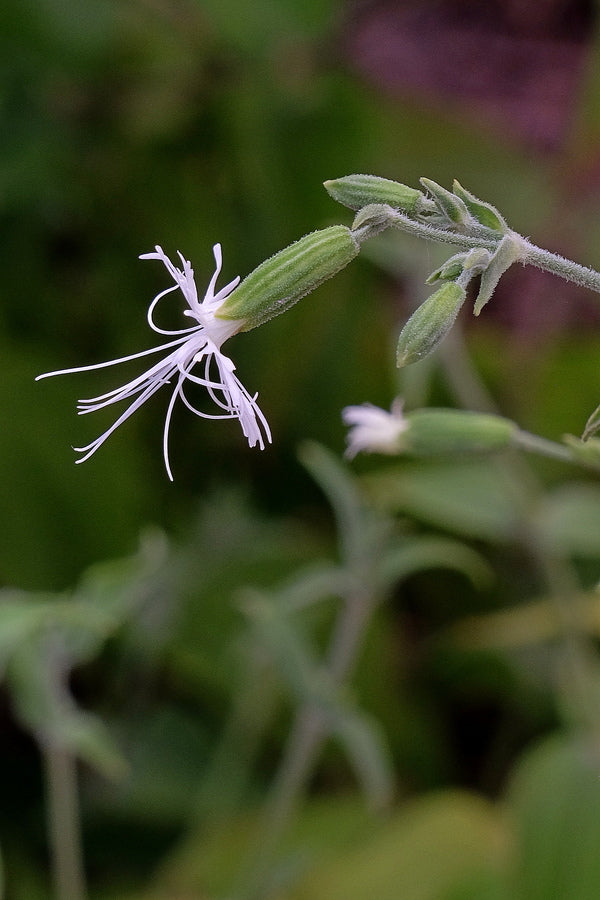Silene ovata
Blue Ridge Catchfly
This plant is not currently for sale. This is an archive page preserved for informational use.
Shop Available SileneItem #: 3147
Zones: 5a to 8b
Dormancy: Winter
Height: 36" tall
Culture: Part Sun to Light Shade
Origin: United States
Pot Size: 3.5" pot (24 fl. oz/0.7 L)
Silene ovata, also known as Blue Ridge catchfly, is one of the rarer of the US native catchflies, with a native range from southern Illinois south to Georgia. This is not a common species anywhere and we need your help to share this worldwide to ensure its survival. In the wild, Silene ovata is found in forests on rocky wooded slopes, but we've grown it since 2006 in half day sun, and found it amazingly easy, even in unattended parts of the garden where it receives no irrigation. Silene ovata forms a lanky tangle of stems to 3' tall x 5' wide, clothed with narrow, sticky green leaves...to catch flies. At the end of each stem, you'll find the small white carnation-like white flowers that open in the evening, just in time for a visit from a thirsty moth.
Maintenance:
Silene ovata, the Blue Ridge Catchfly, requires only a minimal amount of maintenance. The plants do tend to get a bit shabby after blooming for many months from late spring well into summer. At this point cut the old flower stems to the ground. The remaining plant should freshen up and remain evergreen through the winter and rebloom the following growing season. Blue Ridge Catchfly can be somewhat short lived but will produce more than enough seedlings (provided the plants are not cut back before some seed is shed) to replace old plants and allow additional plants for expanding your display and for sharing with others. This is a rare native so do share it with other gardeners and gardens. Individual plants do not run but remain individual clumps. Seedlings are readily transplanted.
Growing Conditions:
Blue Ridge Catchfly thrives in full sun to bright shade and average moisture to moderately dry.
Garden Value:
Blue Ridge Catchfly will charm any gardener or garden visitor who are out in the garden in early evening. The flowers open about 7 pm. They resemble white frilly snowflakes and are delightfully fragrant. Nocturnal pollinators are sure to visit the flowers.
Natural Impact:
This rare native is easy to grow in gardens so the home gardener can have a hand in preserving this wild treasure. That new plants are produced from seeds maintains a much larger gene pool than if only a single clone was being grown.


-
Other Attributes
Genus: Silene
Flower Color: White/Cream
Leaf Color: Green
Bloom Time: Summer
Container Role: Fillers
Garden Themes: Cottage Garden Plants , White Garden
Other: Drought Tolerant Plants , Georgia native plants , Pollinator Plants , North American Native Plants , North Carolina Native Plants , Plants Named After Animals , Rabbit Resistant Plants , United States Native Plants , Plants Retiring This Year


